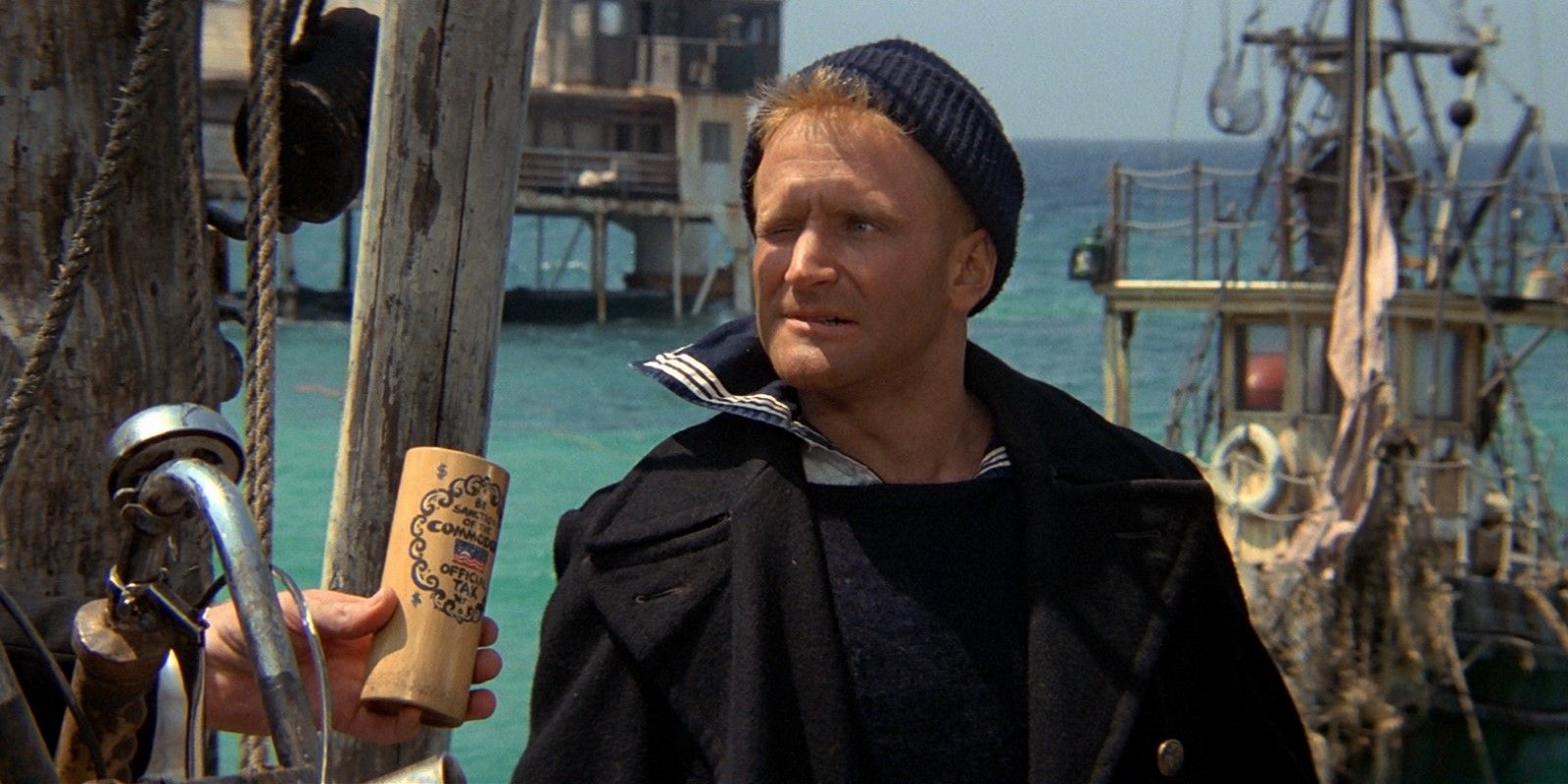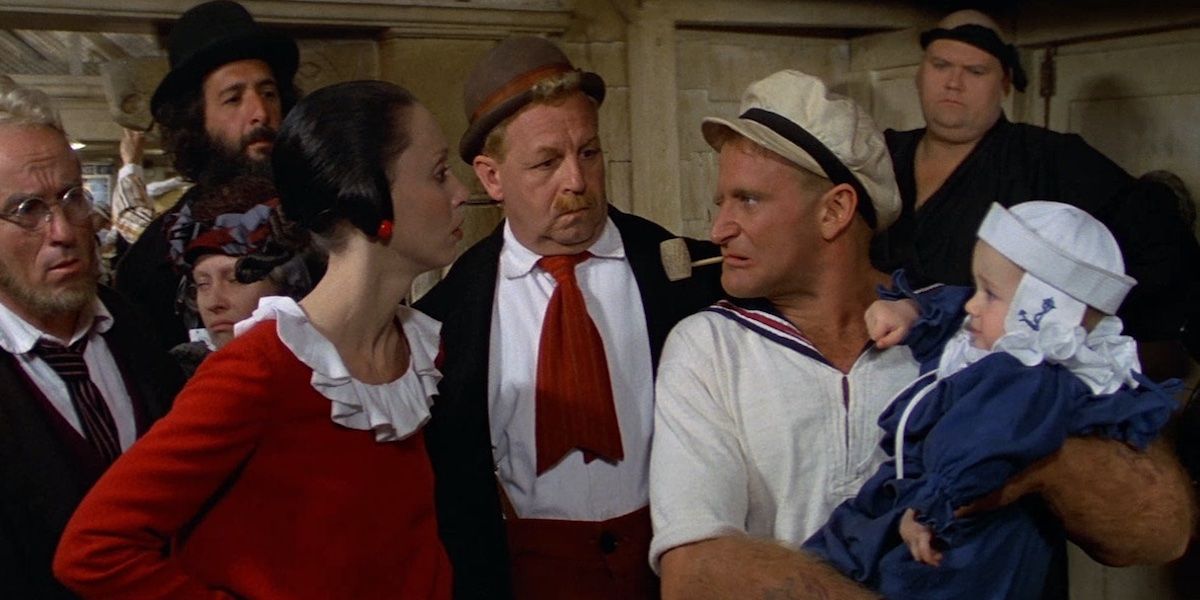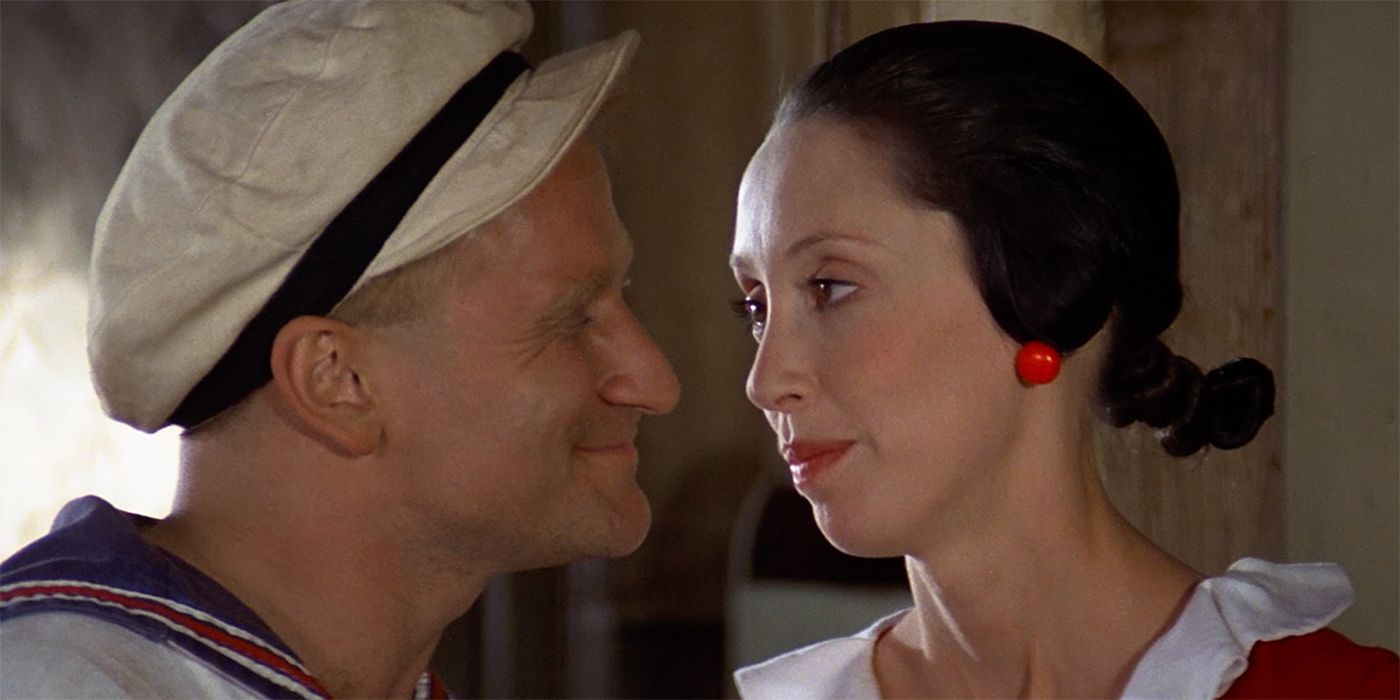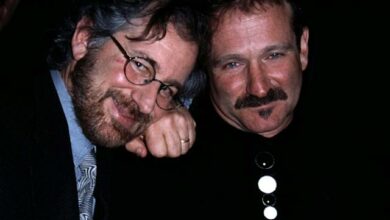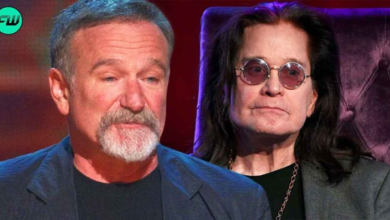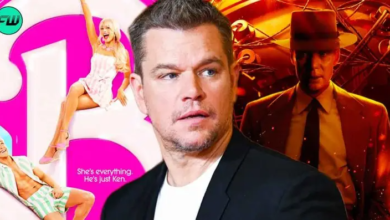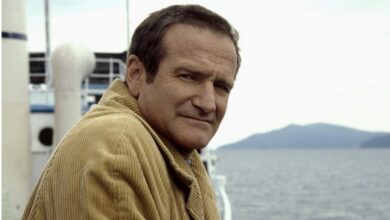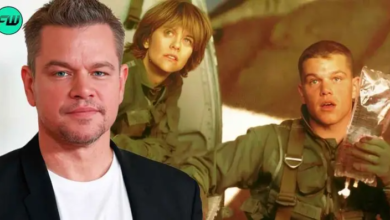Filming Robin Williams’ First Starring Role Was a Production Nightmare
Only barely strong to the finish, with or without the spinach.
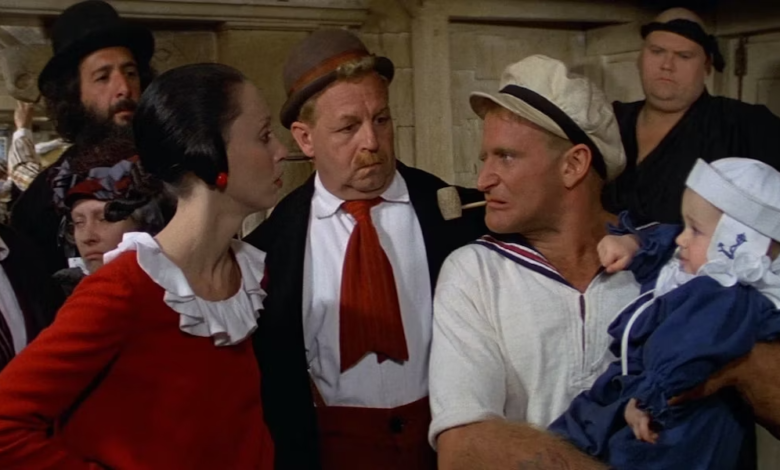
THE BIG PICTURE
- Hollywood’s live-action films based on cartoons can be either hugely successful or costly misfires.
- The making of the live-action film Popeye was filled with second choices and behind-the-scenes drama.
- Despite mixed reviews, Popeye gained a cult following and remains the last film featuring the spinach-loving sailor to date.
Live-action films based on cartoons are one of Hollywood’s most fascinating genres. When they’re done well, they are enormously successful, like 1994’s The Flintstones, a film that brought Bedrock to life in all its glory to the tune of $341,631,208 worldwide. When they’re not, they can be a costly misfire, like, well, 2000’s The Flintstones in Viva Rock Vegas, the prequel that brought in $59,468,275 against a budget of $83,000,000. Disney’s live-action update of the animated classic Snow White and the Seven Dwarfs, Snow White, is one project coming soon that will bring the animated world of the dwarfs into the real world of the seven… companions? Every genre has a ground zero, though, and as far as a live-action film that brings to life the fantastical elements of the cartoon it’s based on, 1980’s Robin Williams-led Popeye is arguably it. Behind the scenes, though, Popeye skewed closer to another genre: horror.
First Picks Didn’t Make the ‘Popeye’ Cast
Popeye is, for lack of a better descriptor, a movie of second picks, beginning with the character himself. Paramount lost out on a bid with Columbia over the rights to Annie, and producer Robert Evans, who desperately had wanted to make an Annie musical, turned to Popeye upon learning Paramount had the rights, looking to turn the heroic sailor man into a comic strip musical that would rival the red-headed musical moppet. Evans turned to cartoonist and screenwriter Jules Feiffer, who was behind 1971’s Carnal Knowledge, to draft the screenplay. Feiffer agreed but on one condition: the movie would be based on E.C. Segar‘s original Popeye comic strip, not on the successful Max Fleischer Popeye the Sailor Man cartoons, which was the version of the character the public was most familiar with. Evans, for his part, simply agreed, saying, “I want to do whatever Popeye you want to do.”
The hunt for a director was next, with Hal Ashby the first contender, but after he passed on the project Evans turned to Robert Altman. The timing was perfect: Altman needed a successful commercial project after the debacle of his five-picture deal with Fox (the last of the five films for Fox, HealtH, wasn’t even released). Then there was the cast. Dustin Hoffman was originally slated for the lead and was reportedly eager early on, but after quarreling with Feiffer over the script Hoffman left the project. Paramount exec Michael Eisner suggested Robin Williams, at the peak of his popularity with Mork & Mindy, and with Evans’ backing, the talented Williams was hired. Shelley Duvall was brought on as Olive Oyl, but even she wasn’t the first choice for the role (despite arguably being the most perfectly cast for the movie). Paramount wanted SNL alum Gilda Radner but ceded to Altman’s insistence on Duvall.
Filming of ‘Popeye’ Was a Drug-Fueled Nightmare
With everyone in place, filming was set to begin. Robert Altman set his sights on Malta, specifically an area called Anchor Bay, which not only was aesthetically perfect, but far from the prying eyes of studio execs. However, in order to accommodate filming and set building, major work had to be completed first. Frederick Muller, production manager, recalled in The Telegraph that, “it was the most impractical location ever. It really was just a goat track leading to a couple of fishermen’s huts. We had to quarry the mountain to build the breakwater, and create a road so that lorries could get down it.” Once the infrastructure was in place, production designer Wolf Kroeger set to work on the village of Sweethaven, which as part of a deal with Malta’s government would be a permanent structure bequeathed to the island. Timber was shipped in from Italy, while the roof shingles came in from Canada in nine shipping containers. A music studio for Harry Nillson, who provided the music for the film, and his musicians was also built.
Robert Altman and Robert Evans also ensured that alcohol and drugs were always on hand, with Evans almost instigating a diplomatic nightmare when his cocaine-filled luggage went missing at the airport. Filming equipment was even used to smuggle in cocaine. The abundance of booze and drugs led to Altman exhibiting erratic behavior, with Williams threatening to quit on one occasion due to Altman’s absence on set (per The Telegraph, Altman was at the casino instead). The tension-filled set soon led to inter-departmental conflict, Altman ceasing talk with the Italian cinematographer, and everyone shutting out Feiffer.
‘Popeye’ Wasn’t Strong to the Finish After All
What happened next is not in the least surprising. As cited previously in Yahoo! Movies, after spending millions on set building and other high-expense elements, Paramount pulled the plug. With the crew now leaving the set, Duvall was forced to “Ed Wood” a scene where she’s in the arms of an octopus, flailing about while holding the arms to make it appear that it was a real struggle. Williams’ performance was also put under a microscope, with producers fearful that no one would be able to understand what he was saying. As Williams recounts, “Going back they wanted me to re-loop it, but it wasn’t meant to be understood. It was meant to be like (in voice), ‘Oh, I seen better looks in oatmeal,’ you know, this kind of wild stuff.”
Finally, Popeye hit theater screens. It was a moderate success, with $50 million in receipts against its $20 million budget, but critics’ reviews were decidedly mixed. The film has since gained a cult following, with many citing the performances of Williams and Duvall as underrated. As it stands, the 1980 film would be the last of the spinach-loving sailor on the big screen to date. A highly-touted Popeye CGI-animated film under Genndy Tartakovsky was in development as recently as 2020 but has since been scuttled without word of any further progress, with the rights having returned to King Features Syndicate. Hopefully, Popeye won’t be the last time we see the sailor with the giant forearms and corn cob pipe on film. But if it is, at least it’s one hell of a story, both on and off the silver screen.

